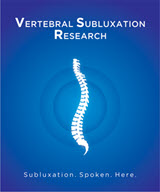ICA's Welsh Signs off on Necessary Drugs & Primary Care

“The charge to the committee was to develop mutually agreeable language for incorporation into the Foreword (Preface) to the CCE accreditation standards that acknowledges the scope of practice and identity of the chiropractic profession.”
Those participating included:
- Dr. Joseph Brimhall, President, University of Western States
- Dr. William Meeker, President, Palmer College of Chiropractic
- Dr. Lawrence O’Connor, President, Federation of Chiropractic Licensing Boards
- Dr. Keith Overland, President, American Chiropractic Association
- Dr. Guy Riekeman, President, Life University
- Dr. Stephen Welsh, Secretary-Treasurer, International Chiropractors Association
- Dr. Craig Little, Council Chair, Council on Chiropractic Education (Ex-officio)
- Dr. Tom Benberg, President, Council on Chiropractic Education (Ex-officio)
- Dr. Kate Rufolo, President, Congress of Chiropractic State Associations
In the recent battles between the CCE and various stakeholder groups within the profession, the topics that have received the most attention involve the removal of “without drugs and surgery” from the CCE Accreditation Standards and the sidelining of the core concept of chiropractic – vertebral subluxation.
Numerous other issues were involved in the ongoing accreditation concerns, including the most important – primary care. However, it was predicted that victory in the accreditation war would be declared by the conservative, traditional faction as soon as language regarding vertebral subluxation was put back in a more prominent role along with “without drugs and surgery”.
The Consensus Document produced by this Ad Hoc Committee included the following changes to the Preface to the CCE Accreditation Standards:
From: Practice primary health care as a portal-of-entry provider for patients of all ages and genders.
To: Practice primary health care as a portal-of-entry provider for patients of all ages and genders focusing on the inherent ability of the body to heal and enhance function without unnecessary drugs or surgery.
Addition of: Focus on neuromusculoskeletal integrity for the purpose of enhancing health and performance.
From: Assess and document a patient's health status, needs, concerns and conditions.
To: Assess and document a patient's health status, needs, concerns and conditions with special consideration of axial and appendicular structures, including subluxation/neuro-biomechanical dysfunction.
While subluxation was added, it is added as being synonymous with “neurobiomechanical dysfunction” – whatever that is.
Further, the phrase “without drugs and surgery” was not put back in. Instead the CCE and this Ad Hoc Committee, ostensibly representing the profession and its Stakeholders, added:
Practice primary health care as a portal-of-entry provider for patients of all ages and genders focusing on the inherent ability of the body to heal and enhance function without unnecessary drugs or surgery.
So at this point not only was “without drugs and surgery” not put back in the Standards but the use of drugs themselves have been put in the Standards. The obvious conclusion to be drawn from “without unnecessary drugs or surgery” is that chiropractors will only prescribe “necessary” drugs.
Primary Care Retains its Central Role
Beyond the subluxation and drug issue, the biggest issue related to chiropractic education and practice remains as the central feature in the Standards – Primary Care.
The preface as amended by the ICA, ACA, COCSA, FCLB and representative College Presidents reads in part:
“An accredited DCP prepares its graduates to practice as primary care chiropractic physicians, and provides curricular and clinical evidence of such through outcome measures.”
The document further clarifies the responsibility of CCE accredited institutions to train its graduates to” “Practice primary health care as a portal-of-entry provider . . .”
The amended Preface also asserts that these training issues are necessary “. . . in order to competently practice as a primary care chiropractic physician . . .”
While the Preface states that patients are to be assessed with “special consideration” of subluxation/neurobiomechanical dysfunction the mandates inherent in the wording reinforce some of the roles and responsibilities of a primary care physician including:
- Assessing a patient’s health status
- Formulating diagnoses
- Developing treatment plans
- Addressing risk factors
- Following best practices in the management of health concerns
- Coordination of care
- Assessment of health indicators
- Provision of General & Public Health information
- Lifestyle counseling
The Consensus Document was signed by each of the participants. Interestingly, no other Stakeholders, such as the International Federation of Chiropractors & Organizations (IFCO), Movement for Chiropractic Quality & Integrity (MCQI), the Sustainability Committee (SC) or other members of the DaVinci Group were invited to participate.
Dr. Bill Decken, Chairman of the Board of the IFCO stated:
“The IFCO is not pleased with the consensus document as it gives only cursory level attention to subluxation and limits it to a neuro-biomechanical entity. To have the preface of the CCE standards state that special consideration is being given to subluxation and NOT have that backed up with metacompetencies is not congruent to say the least. Further, chiropractic is a portal of entry health care profession and need not venture into the realm of primary care physician.”
The ICA signed off on this Consensus document despite the recent comments by the ICA president Gary Walsemann that the CCE “whitewashed” the profession by including “primary care physician” status for chiropractors and speaking of the importance to reverse this underhanded maneuver.
Blogs
- The Chiropractic Cartel: A Look Back at Bias in Accreditation and its Imact on Today's Profession
- Inside Montana's Chiropractic Monopoly: ACA & MCA's Brazen Board Takeover
- Concerns Grow About Control of the NY State Chiropractic Board by the ACA - Use of X-ray in NY Under Threat
- Reproductive Health Information and Chiropractic Care: Navigating New Privacy Regulations
- Navigating Substance Use Disorder (SUD) Consent: What Chiropractors Need to Know













